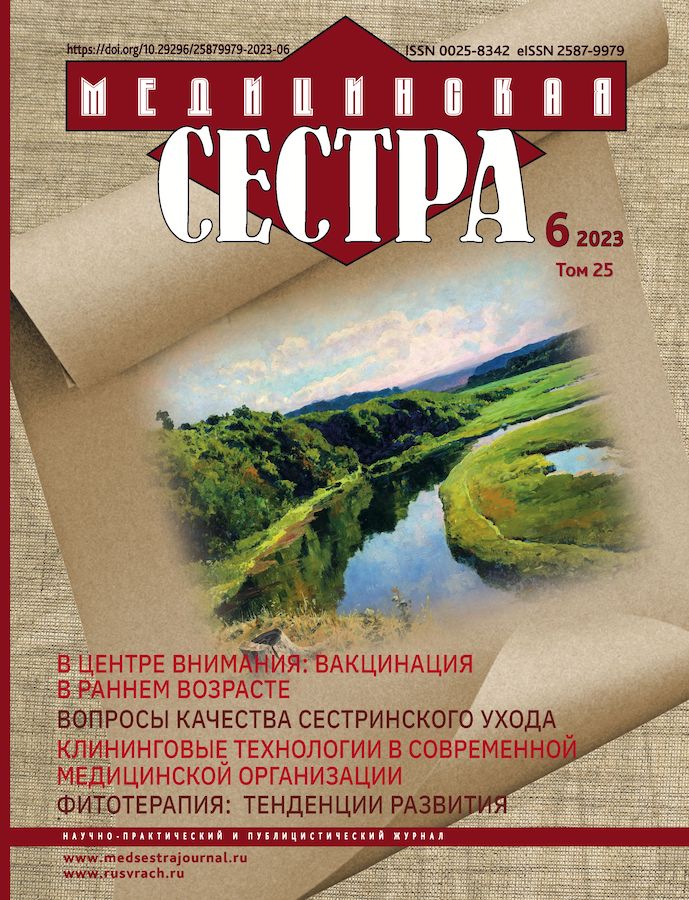Degenerative disc disease in nurse practice
- 作者: Skvortsov V.V.1, Gorbach A.N.1, Akramov I.N.1
-
隶属关系:
- Federal State Budgetary Educational Institution of Higher Education «Volgograd state medical university» of the ministry of health of the Russian Federation
- 期: 卷 25, 编号 6 (2023)
- 页面: 19-22
- 栏目: Profession: theory and practice
- URL: https://journals.eco-vector.com/0025-8342/article/view/601780
- DOI: https://doi.org/10.29296/25879979-2023-06-04
- ID: 601780
如何引用文章
详细
Osteochondrosis of the spine plays a leading role among diseases of the peripheral nervous system, being a serious social problem in many countries. The significant prevalence of this disease among people of working age, high rates of disability, large economic losses determine the relevance of this problem, its epidemiological and socio-economic significance. Osteochondrosis of the spine can be considered as a polyethological, but monopathogenetic disease, the clinical signs of which depend on various endogenous and exogenous factors. This article provides basic information about the treatment of neurological syndromes of osteochondrosis of the spine. The issues of pathogenesis of vertebrogenic diseases of the nervous system are considered. The biomechanical features of the spine under normal conditions and in the event of pathology are briefly described. The main methods of the therapeutic approach in the case of this pathology, the use of chondroprotectors as a necessary supplement to the therapy of NSAIDs are considered.
全文:
作者简介
Vsevolod Skvortsov
Federal State Budgetary Educational Institution of Higher Education «Volgograd state medical university» of the ministry of health of the Russian Federation
编辑信件的主要联系方式.
Email: vskvortsov1@ya.ru
ORCID iD: 0000-0002-2164-3537
Doctor of Medicine, Associate Professor of the Department of Internal Medicine
俄罗斯联邦, VolgogradArina Gorbach
Federal State Budgetary Educational Institution of Higher Education «Volgograd state medical university» of the ministry of health of the Russian Federation
Email: rainy.season@yandex.ru
student
俄罗斯联邦, VolgogradIskandar Akramov
Federal State Budgetary Educational Institution of Higher Education «Volgograd state medical university» of the ministry of health of the Russian Federation
Email: iskandar_akramov@bk.ru
resident
俄罗斯联邦, Volgograd参考
- Богачева Л.А., Ушаков Г.Н., Вахлаков А.Н. Амбулаторное лечение болей в спине. Сообщение I и II. Неврологический журнал. 2018; (3): 39–45.
- Гринь, А.А. Современные классификации повреждений нижнешейного отдела позвоночника. Часть 1. Обзор наиболее популярных шкал и систем / А.А. Гринь, И.С. Львов, С.Л. Аракелян [и др.]. Нейрохирургия. 2019; 21 (1): 90–102.
- Девятова М.В. Нет остеохондрозу. СПб.: Комплект, 2018. 144.
- Епифанов В.А. Остеохондроз позвоночника (диагностика, лечение, профилактика) / В.А. Епифанов, А.В. Епифанов. — М.: МЕДпресс-информ, 2008; 3-е изд. 272.
- Журавлева Л.В., Александрова Н.К. Хондропротекторы как патогенетически обоснованная терапия остеоартроза. Харьковский национальный медицинский университет, 2010.
- Зупанец И.А., Борткевич О.П. Современные хондропротекторы: от клинической фармакологии до практической медицины. Тезисы докладов сателлитного симпозиума «Современные хондропротекторы: от клинической фармакологии к практической медицине». Киев, 26 октября 2007.
- Карлов В.А. Неврология: руководство для врачей. 2-е изд., перераб. и доп. М.: 2002; 328–349.
- Неврология: национальное руководство / под ред. Е.И. Гусева, А.Н. Коновалова, В.И. Скворцовой. 2-е изд., перераб. и доп. М.: ГЭОТАР-Медиа, 2018; 1: 880.
- Никифоров А.С, Коновалов А.Н., Гусев Е.И. Клиническая неврология; Том 2. Учебная литература для слушателей системы последипломного образования. М.: Медицина, 2002; 297–312.
- Савченков Ю.И, Солдатова О.Г., Шилов С.Н.: Возрастная физиология (физиологические особенности детей и подростков): учеб. пособие. М.: Владос, 2018; 146.
- Справочник Видаль. Лекарственные препараты в России: Справочник. Хондроксид® (CHONDROXIDE). Видаль Рус, 2017; 781.
- Хабиров Ф.А. Клиническая неврология позвоночника. Казань, 2002; 472.
- Шавловская О.А. Обзор зарубежной литературы по применению хондроитина сульфата. РМЖ. 2012; (34): 1678-80.
补充文件





